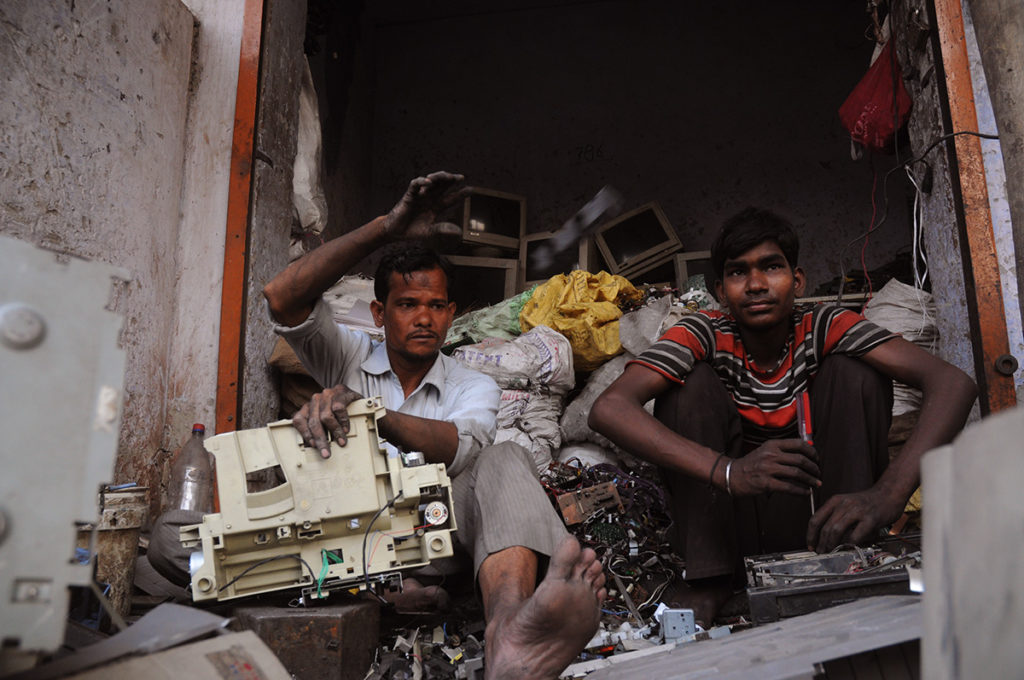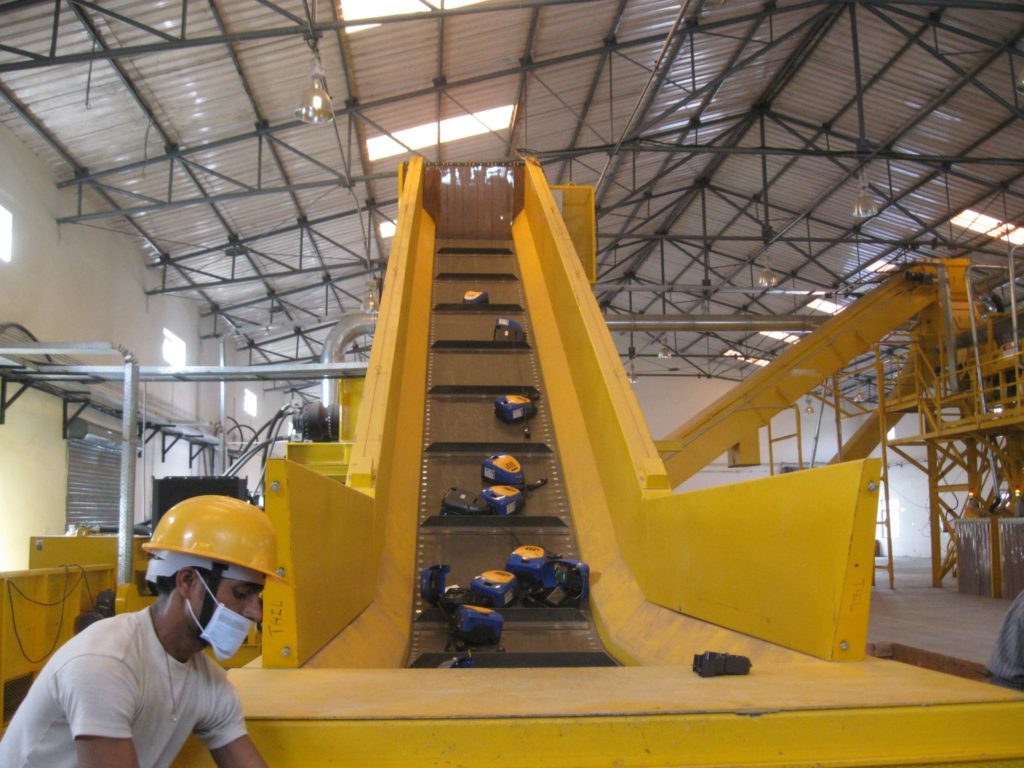Plastics, metallic parts and circuit boards are segregated first. Plastic goes to Mundka or Tikri Kalan in Delhi, from there it goes to Bawana, Nangloi among other clusters where plastic can be processed. Circuit boards with precious metals like copper, lead and gold go to Moradabad, which specialises in gold extraction. Other parts go to Mandoli and Loni where lead and copper are extracted after acid wash. In Seelampur, hot blue torches are used to melt the boards, too.
Who buys the extracted metals? There are formal copper smelting plants that mostly buy the extracts, purify and then use further. Lead has many takers among the battery industry, which too is informal for the large part. In Mandoli, for instance, there are battery manufacturers who engage in quick cash transactions.
There are around 170 authorised recyclers in India currently. Attero Recycling for instance, have network to collect e-waste from across the country and it’s all processed at the company’s Roorkee plant. Of these, only four or five are real recyclers, the rest are dismantlers.
Priti Mahesh, a senior programme coordinator at Toxics Link, who has spent over a decade researching e-waste, says the informal recycling network is “really big” but it is difficult to put a number to the number of people involved in it or the number of dismantlers or recyclers. She reckons at least 90% of the e-waste in the country is dismantled and recycled in unorganised hubs like Seelampur but the efficiency of extracting metals is abysmally poor — as low as 20%-30% — because the extractors do not have sophisticated equipments and the labour does not have any expertise in dealing with the complex requirements.
Most workers in Seelampur earn less than Rs 200 a day. Their income is linked to how much they can dismantle and extract every day. It also depends on what they extract. As Naved, another worker in Seelampur told me, metals like copper can fetch Rs 400 or more a kilo. Gold and silver can fetch much more but gold extraction is fraught with danger.
As Rohan Gupta, COO of Attero Recycling, a Noida-based e-waste management company, pointed out, these workers use cyanide while extracting gold in a process called gold cyanidation — normally used by some of the world’s biggest miners as a metallurgical technique to extract gold from low-grade ore.
The economics justifies the means for the poor in Seelampur. Extracting Gold from useless smartphones is indeed lucrative. For instance, 41 smartphones contain a gram of gold — worth about Rs3,000. For every one million smartphones recycled, 16,000 kg, 350 kg of silver, 34 kg of gold, and 14 kg of palladium can be recovered, according to Attero.
















